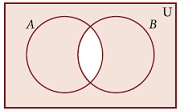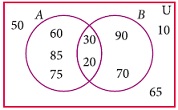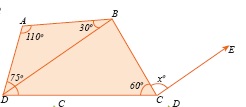- State Board
-
12th Standard
-

Biology
-

Computer Applications
-

Computer Science
-

Business Maths and Statistics
-

Commerce
-

Economics
-

Maths
-

Chemistry
-

Physics
-

Computer Technology
-

History
-

Accountancy
-

Tamil
-

Maths
-

Chemistry
-

Physics
-

Biology
-

Computer Science
-

Business Maths and Statistics
-

Economics
-

Commerce
-

Accountancy
-

History
-

Computer Applications
-

Computer Technology
-

English
12th Standard stateboard question papers & Study material
தமிழ் Subjects
English Subjects
-
-
11th Standard
-

Maths
-

Biology
-

உயிரியல் - தாவரவியல்
-

Economics
-

Physics
-

Chemistry
-

History
-

Business Maths and Statistics
-

Computer Science
-

Accountancy
-

Commerce
-

Computer Applications
-

Computer Technology
-

Tamil
-

Maths
-

Commerce
-

Economics
-

Biology
-

Business Maths and Statistics
-

Accountancy
-

Computer Science
-

Physics
-

Chemistry
-

Computer Applications
-

History
-

Computer Technology
-

Tamil
-

English
11th Standard stateboard question papers & Study material
தமிழ் Subjects
English Subjects
-
-
9th Standard
-

-

-

-

-

-

-

Maths
-

Science
-

Social Science
-

Maths
-

Science
-

Social Science
9th Standard stateboard question papers & Study material
தமிழ் Subjects
English Subjects
-
-
6th Standard
-

Maths
-

Science
-

Social Science
-

Maths
-

Science
-

Social Science
6th Standard stateboard question papers & Study material
தமிழ் Subjects
English Subjects
-
-
10th Standard
-

Maths
-

Science
-

Social Science
-

Tamil
-

Maths
-

Science
-

Social Science
-

English
-

English
10th Standard stateboard question papers & Study material
தமிழ் Subjects
English Subjects
-
-
7th Standard
-

Maths
-

Science
-

Maths
-

Science
-

Social Science
7th Standard stateboard question papers & Study material
தமிழ் Subjects
English Subjects
-
-
8th Standard
-

கணிதம் - old
-

Science
-

Social Science
-

கணிதம்
-

Maths
-

Science
-

Social Science
8th Standard stateboard question papers & Study material
தமிழ் Subjects
English Subjects
-
-
12th Standard
- CBSE Board
-
12th Standard CBSE
-

Biology
-

Chemistry
-

Physics
-

Maths
-

Accountancy
-

Business Studies
-

Economics
-

Introductory Micro and Macroeconomics
-

Computer Science
-

Geography
-

English
-

History
-

Indian Society
-

Physical Education
-

Sociology
-

Political Science
-

Engineering Graphics
-

Bio Technology
-

Entrepreneurship
-

Hindi Elective
-

Home Science
-

Legal Studies
-

Psychology
-

Hindi Core
-

Tamil
12th Standard CBSE Subject Question Paper & Study Material
-
-
11th Standard CBSE
-

Physics
-

Mathematics
-

Chemistry
-

Biology
-

Economics
-

Business Studies
-

Accountancy
-

Computer Science
-

English
-

Geography
-

History
-

Physical Education
-

Psychology
-

Sociology
-

Bio Technology
-

Enterprenership
-

Hindi
-

Home Science
-

Political Science
-

Applied Mathematics
11th Standard CBSE Subject Question Paper & Study Material
-
- 10th Standard CBSE
-
9th Standard CBSE
-

Social Science
-

Mathematics
-

Science
-

English
-

Hindi
9th Standard CBSE Subject Question Paper & Study Material
-
-
8th Standard CBSE
-

Social Science
-

Science
-

Mathematics
-

English
8th Standard CBSE Subject Question Paper & Study Material
-
-
7th Standard CBSE
-

Social Science
-

Science
-

Mathematics
-

English
7th Standard CBSE Subject Question Paper & Study Material
-
-
6th Standard CBSE
-

Social Science
-

Science
-

Mathematics
-

English
6th Standard CBSE Subject Question Paper & Study Material
-
-
12th Standard CBSE
- Free Online Test
- News
- Study Materials
-
Students
-

Stateboard Tamil Nadu
-

CBSE Board
-

Free Online Tests
-

Educational News
-

Scholarships
-

Entrance Exams India
-

Video Materials
Study Materials , News and Scholarships
-
-
Students
-
If A = {x, y, z} then the number of non - empty subsets of A is ________.
(a)8
(b)5
(c)6
(d)7
-
Which of the following is correct?
(a)∅ ⊆ {a, b}
(b)∅ ∈ {a, b}
(c){a} ∈ {a, b}
(d)a ⊆ {a, b}
-
If A∪B = A∩B, then ________.
(a)A ≠ B
(b)A = B
(c)A ⊂ B
(d)B ⊂ A
-
If B - A is B, then A∩B is ________.
(a)A
(b)B
(c)U
(d)∅
-
The shaded region in the adjacent diagram represents ______________
 (a)
(a)(A∪B)′
(b)(A∩B)′
(c)A′∩B′
(d)A∩B
-
From the adjacent diagram n[P(AΔB)] is ________.
 (a)
(a)8
(b)16
(c)32
(d)64
-
If n(A) = 10 and n(B) = 15, then the minimum and maximum number of elements in A ∩ B is ________.
(a)(10,15)
(b)(15,10)
(c)(10,0)
(d)(0,10)
-
If X = {x : x = 4(n – 1), n ∈ N} and Y = {y : y = 3n – 2n – 1, n ∈ N}, then X∪Y is ______________
(a)W
(b)X
(c)Y
(d)N
-
Let A = {∅} and B = P(A), then A∩B is ________.
(a){ ∅, {∅} }
(b){∅}
(c)∅
(d){0}
-
In a class of 50 boys, 35 boys play Carrom and 20 boys play Chess then the number of boys play both games is________.
(a)5
(b)30
(c)15
(d)10
-
If n is a natural number then \(\sqrt { n } \) is ________.
(a)always a natural number
(b)always an irrational number
(c)always a rational number
(d)may be rational or irrational
-
Which of the following is not true?
(a)Every rational number is a real number
(b)Every integer is a rational number
(c)Every real number is an irrational number
(d)Every natural number is a whole number
-
Which one of the following, regarding sum of two irrational numbers, is true?
(a)always an irrational number
(b)may be a rational or irrational number
(c)always a rational number
(d)always an integer.
-
Which one of the following has a terminating decimal expansion?
(a)\(\frac { 5 }{ 64 } \)
(b)\(\frac { 8 }{ 9 } \)
(c)\(\frac { 14 }{ 15 } \)
(d)\(\frac { 1 }{ 12 } \)
-
Which one of the following is an irrational number.
(a)\(\sqrt { 25 } \)
(b)\(\sqrt { \frac { 9 }{ 4 } } \)
(c)\(\frac { 7 }{ 11 } \)
(d)\(\pi\)
-
An irrational number between 2 and 2.5 is ________.
(a)\(\sqrt { 11 } \)
(b)\(\sqrt { 5 } \)
(c)\(\sqrt { 2.5 } \)
(d)\(\sqrt { 8 } \)
-
The smallest rational number by which \(\frac { 1 }{ 3 } \) should be multiplied so that its decimal expansion terminates after one place of decimal is ________.
(a)\(\frac { 1 }{ 10 } \)
(b)\(\frac { 3 }{ 10 } \)
(c)3
(d)30
-
The number \(0.\bar { 3 } \) in the form \(\frac { p }{ q } \) where p and q are integers and \(q\neq 0\)
(a)\(\frac { 33 }{ 100 } \)
(b)\(\frac { 3 }{ 10 } \)
(c)\(\frac { 1 }{ 3 } \)
(d)\(\frac { 3 }{ 100 } \)
-
The value of \(0.\bar { 23 } +0.\bar { 22 } \) is ____________
(a)\(0.\bar { 43 } \)
(b)0.45
(c)\(0.4\bar { 5 } \)
(d)\(0.\bar { 45 } \)
-
if \(\frac { 1 }{ 7 } \) = \(0.\overline { 142857 } \) then the value of \(\frac { 5 }{ 7 } \) ________.
(a)\(0.\overline { 142857 } \)
(b)\(0.\overline { 714285 } \)
(c)\(0.\overline { 571428 } \)
(d)0.714285
-
Find the odd one out of the following.
(a)\(\sqrt { 32 } \times \sqrt { 2 } \)
(b)\(\frac { \sqrt { 27 } }{ \sqrt { 3 } } \)
(c)\(\sqrt { 72 } \times \sqrt { 8 } \)
(d)\(\frac { \sqrt { 54 } }{ \sqrt { 18 } } \)
-
\(0.\overline { 34 } +0.3\bar { 4 } \) = ________.
(a)\(0.6\overline { 87 } \)
(b)\(0.\overline { 68 } \)
(c)\(0.6\bar { 8 } \)
(d)\(0.68\bar { 7 } \)
-
If x3 + 6x2 + kx + 6 is exactly divisible by (x + 2), then k= ?
(a)-6
(b)-7
(c)-8
(d)11
-
The root of the polynomial equation 2x + 3 = 0 is ________.
(a)\(\frac{1}{3}\)
(b)\(-\frac{1}{3}\)
(c)\(-\frac{3}{2}\)
(d)\(-\frac{2}{3}\)
-
The type of the polynomial 4–3x3 is ________.
(a)constant polynomial
(b)linear polynomial
(c)quadratic polynomial
(d)cubic polynomial.
-
x3 – x2 is a …………..
(a)monomial
(b)binomial
(c)trinomial
(d)constant polynomial
-
If x51 + 51 is divided by x + 1, then the remainder is _______.
(a)0
(b)1
(c)49
(d)50
-
The zero of the polynomial 2x+5 is _______.
(a)\(\frac {5}{2}\)
(b)\(-\frac {5}{2}\)
(c)\(\frac {2}{5}\)
(d)\(-\frac {2}{5}\)
-
The sum of the polynomials p(x) = x3 – x2 – 2, q(x) = x2–3x+ 1 _______.
(a)x3 – 3x – 1
(b)x3 + 2x2 – 1
(c)x3 – 2x2 – 3x
(d)x3 – 2x2 + 3x –1
-
The product of the polynomials p(x) = 4x –3 q(x) = 4x + 3 ____________
(a)1 – x – 8
(b)16x2 – 9
(c)18x3 + 12x2 – 12x – 8
(d)18x3 – 12x2 + 12x + 8
-
The remainder when p(x) = x3 – ax2 + 6x – a is divided by (x – a) is ______________
(a)–5a
(b)\(\frac {1}{5}\)
(c)5
(d)5a
-
The Auto fare is found as minimum Rs. 25 for 3 kilometer and thereafter Rs. 12 for per kilometer. Which of the following equations represents the relationship between the total cost ‘c’ in rupees and the number of kilometers n?
(a)c = 25 + n
(b)c = 25 + 12n
(c)c = 25 + (n–3)12
(d)c = (n–3)12
-
Degree of the polynomial (y3–2)(y3 + 1) is _______.
(a)9
(b)2
(c)3
(d)6
-
Let the polynomials be
(A) –13q5 + 4q2 + 12q
(B) (x2 +4 )(x2 + 9)
(C) 4q8 – q6 + 2
(D) -\(\frac {5}{7}\)y12+y3+y5
Then ascending order of their degree is _______.(a)A,B,D,C
(b)A,B,C,D
(c)B,C,D,A
(d)B,A,C,D
-
It is not possible to construct a triangle when its sides are ____________
(a)8.2 cm, 3.5 cm, 6.5 cm
(b)6.3 cm, 3.1 cm, 3.2 cm
(c)7 cm, 8 cm, 10 cm
(d)4 cm, 6 cm, 6 cm
-
The exterior angle of a triangle is equal to the sum of two ________.
(a)Exterior angles
(b)Interior opposite angles
(c)Alternate angles
(d)Interior angles
-
In the quadrilateral ABCD, AB = BC and AD = DC Measure of ∠BCD is ________.
 (a)
(a)150°
(b)30°
(c)105°
(d)72°
-
ABCD is a square, diagonals AC and BD meet at O. The number of pairs of congruent triangles with vertex O are ________.
 (a)
(a)6
(b)8
(c)4
(d)12
-
In the given figure CE || DB then the value of x0 is ________.
 (a)
(a)45°
(b)30°
(c)75°
(d)85°
-
The correct statement out of the following is ________.
(a)ΔABC ≅ ΔDEF
(b)ΔABC ≅ ΔDEF
(c)ΔABC ≅ ΔFDE
(d)ΔABC ≅ ΔFED
-
If the diagonal of a rhombus are equal, then the rhombus is a ________.
(a)Parallelogram but not a rectangle
(b)Rectangle but not a square
(c)Square
(d)Parallelogram but not a square
-
If bisectors of ∠A and ∠B of a quadrilateral ABCD meet at O, then ∠AOB is ________.
(a)∠C + ∠D
(b)\(\frac { 1 }{ 2 } (\angle C+\angle D)\)
(c)\(\frac { 1 }{ 2 } \angle C+\frac { 1 }{ 3 } \angle D\)
(d)\(\frac { 1 }{ 3 } \angle C+\frac { 1 }{ 2 } \angle D\).
-
The interior angle made by the side in a parallelogram is 90° then the parallelogram is a ________.
(a)rhombus
(b)rectangle
(c)trapezium
(d)kite
-
Which of the following statement is correct?
(a)Opposite angles of a parallelogram are not equal.
(b)Adjacent angles of a parallelogram are complementary.
(c)Diagonals of a parallelogram are always equal.
(d)Both pairs of opposite sides of a parallelogram are always equal.
-
The angles of the triangle are 3x–40, x+20 and 2x–10 then the value of x is ________.
(a)40°
(b)35°
(c)50°
(d)45°
-
Point (–3, 5) lie in the ________ quadrant
(a)I
(b)II
(c)III
(d)IV
-
Signs of the abscissa and ordinate of a point in the fourth quadrant are respectively
(a)(+,+)
(b)( –, –)
(c)(–, +)
(d)( +, –)
-
Point (0, –7) lies ________
(a)on the x-axis
(b)in the II quadrant
(c)on the y-axis
(d)in the IV quadrant
-
Point (–10, 0) lies ___________
(a)on the negative direction of x-axis
(b)on the negative direction of y-axis
(c)in the III quadrant
(d)in the IV quadrant
-
If the y-coordinate of a point is zero, then the point always lies ______.
(a)in the I quadrant
(b)in the II quadrant
(c)on x-axis
(d)on y-axis
-
The point M lies in the IV quadrant. The coordinates of M is _______
(a)(a,b)
(b)(–a, b)
(c)(a, –b)
(d)(–a, –b)
-
The points (–5, 2) and (2, –5) lie in the ________.
(a)same quadrant
(b)II and III quadrant respectively
(c)II and IV quadrant respectively
(d)IV and II quadrant respectively
-
On plotting the points O(0, 0), A(3, – 4), B(3, 4) and C(0, 4) and joining OA, AB, BC and CO, which of the following figure is obtained?
(a)Square
(b)Rectangle
(c)Trapezium
(d)Rhombus
-
If P( –1, 1), Q( 3, -4), R( 1, -1), S(-2, -3) and T( -4, 4) are plotted on a graph paper, then the points in the fourth quadrant are ______.
(a)P and T
(b)Q and R
(c)only S
(d)P and Q
-
The point whose ordinate is 4 and which lies on the y-axis is ______.
(a)( 4, 0 )
(b)(0, 4)
(c)(1, 4)
(d)(4, 2)
-
The distance between the two points ( 2, 3 ) and ( 1, 4 ) is ______.
(a)2
(b)\(\sqrt { 56 } \)
(c)\(\sqrt { 10 } \)
(d)\(\sqrt { 2 } \)
-
If the points A (2, 0), B (-6, 0), C (3, a-3) lie on the x-axis then the value of a is _____.
(a)0
(b)2
(c)3
(d)-6
-
If ( x+2, 4) = (5, y–2), then the coordinates (x,y) are _____.
(a)(7, 12)
(b)(6, 3)
(c)(3, 6)
(d)(2, 1)
-
If Q1, Q2, Q3, Q4 are the quadrants in a Cartesian plane then \({ Q }_{ 2 }\cap { Q }_{ 3 }\) is ______.
(a)\({ Q }_{ 1 }\cup { Q }_{ 2 }\)
(b)\({ Q }_{ 2 }\cup { Q }_{ 3 }\)
(c)Null set
(d)Negative x-axis
-
The distance between the point ( 5, –1 ) and the origin is _______.
(a)\(\sqrt { 24 } \)
(b)\(\sqrt { 37 } \)
(c)\(\sqrt { 26 } \)
(d)\(\sqrt { 17 } \)
Part - A
60 x 1 = 60






 9th Standard Maths Syllabus
9th Standard Maths Syllabus  9th Standard Maths Study Materials
9th Standard Maths Study Materials

Reviews & Comments about Term 1 Important One Mark Question Paper 2 In 9th Maths
Write your Comment